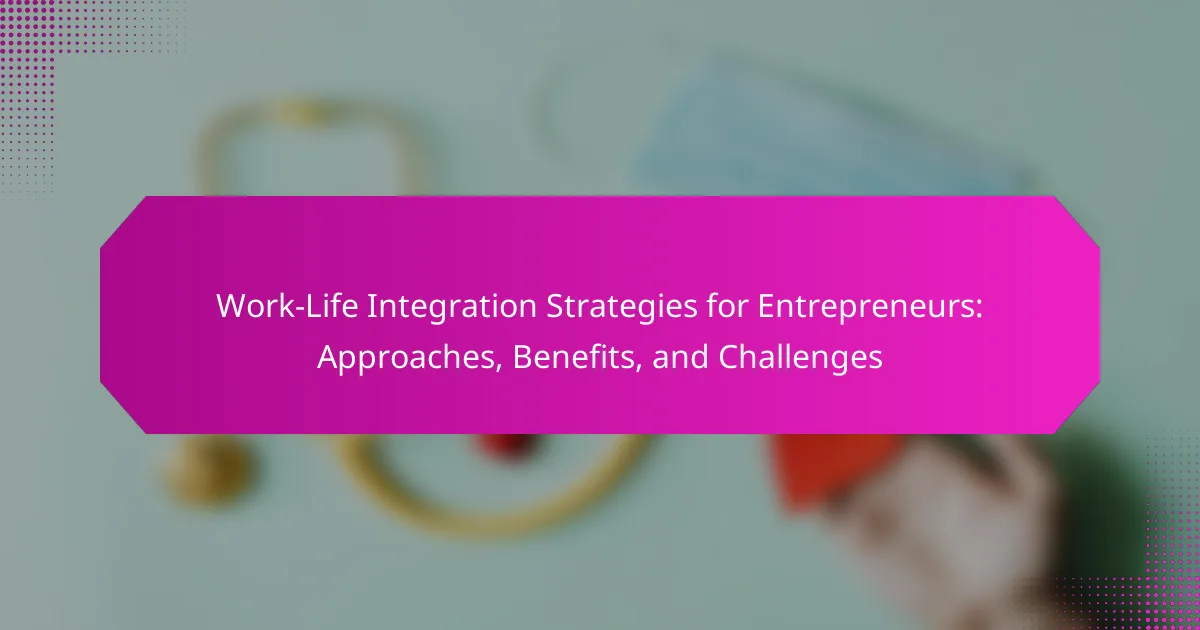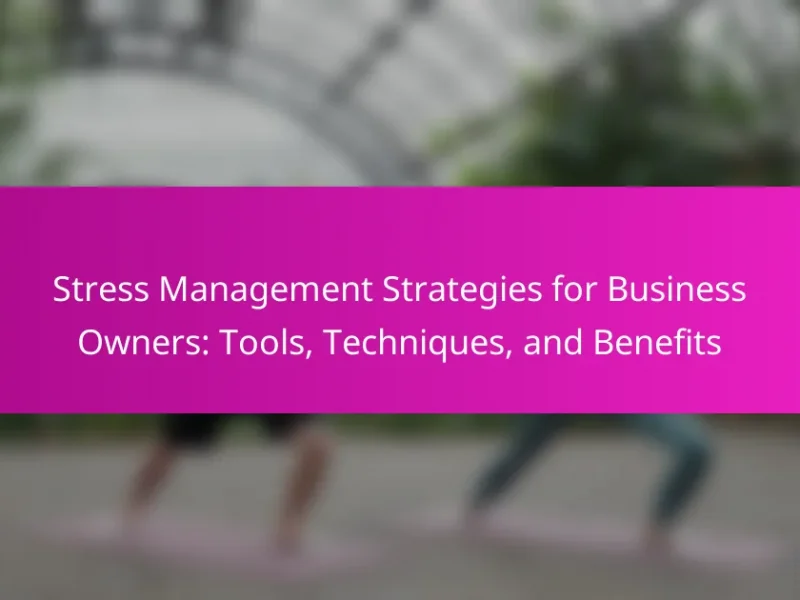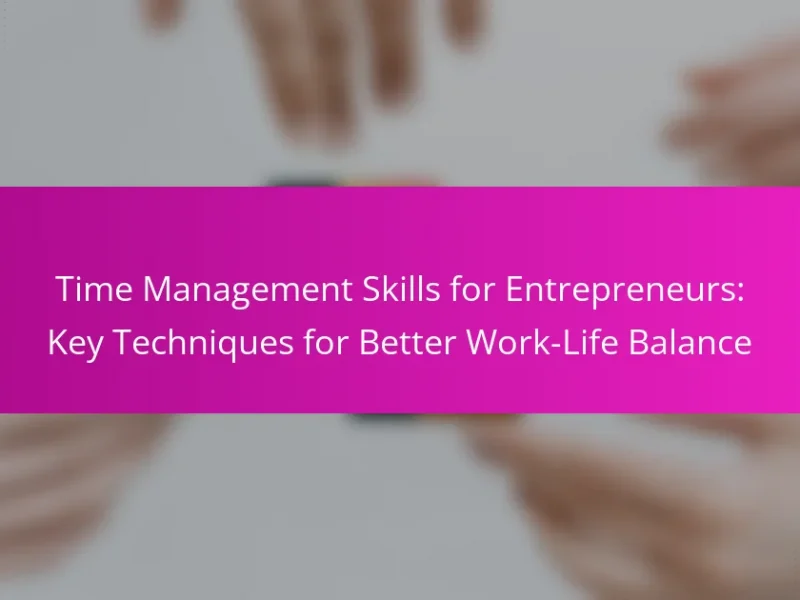Work-life integration strategies can significantly enhance productivity and well-being for entrepreneurs. Key approaches include setting clear boundaries, prioritising tasks, and leveraging technology for flexibility. While these strategies offer benefits like reduced stress and better time management, entrepreneurs also face challenges such as emotional strain and the risk of burnout. Understanding these dynamics is essential for achieving a harmonious balance between personal and professional responsibilities.
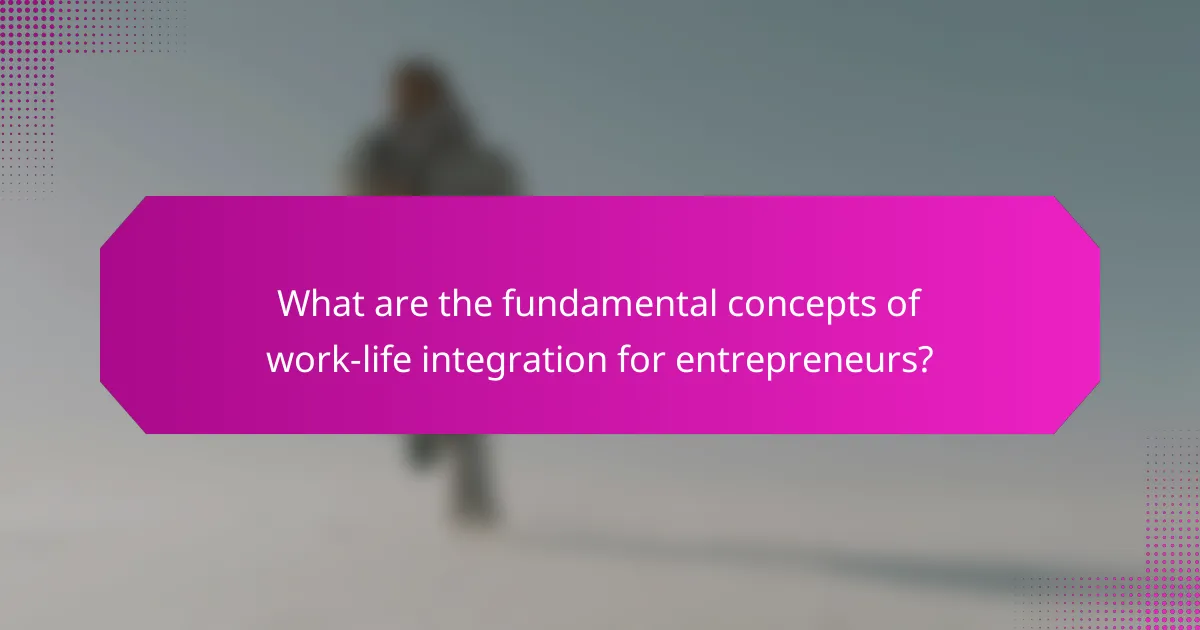
What are the fundamental concepts of work-life integration for entrepreneurs?
Work-life integration for entrepreneurs focuses on blending personal and professional responsibilities to enhance overall well-being. Key strategies include setting clear boundaries, prioritising tasks, and utilising technology for flexibility. Benefits encompass improved productivity, reduced stress, and a more balanced lifestyle. Challenges often arise from blurred lines between work and home life, requiring ongoing adjustments and self-discipline.
How does work-life integration differ from work-life balance?
Work-life integration emphasises blending personal and professional responsibilities, while work-life balance focuses on maintaining distinct boundaries. Entrepreneurs often adopt integration strategies to enhance flexibility and productivity. This approach allows for seamless transitions between work and personal life, promoting a holistic lifestyle. However, challenges include potential burnout and difficulty in disconnecting from work. Balancing these aspects is crucial for sustainable success.
What are the key components of effective work-life integration?
Effective work-life integration involves balancing professional and personal responsibilities seamlessly. Key components include flexible scheduling, setting clear boundaries, prioritising tasks, leveraging technology for efficiency, and fostering a supportive work environment. These strategies enable entrepreneurs to enhance productivity while maintaining personal well-being. Emphasising flexibility allows for adapting to changing demands, while clear boundaries prevent burnout. Utilising technology streamlines processes, and a supportive environment encourages collaboration and communication, ultimately leading to a harmonious work-life dynamic.
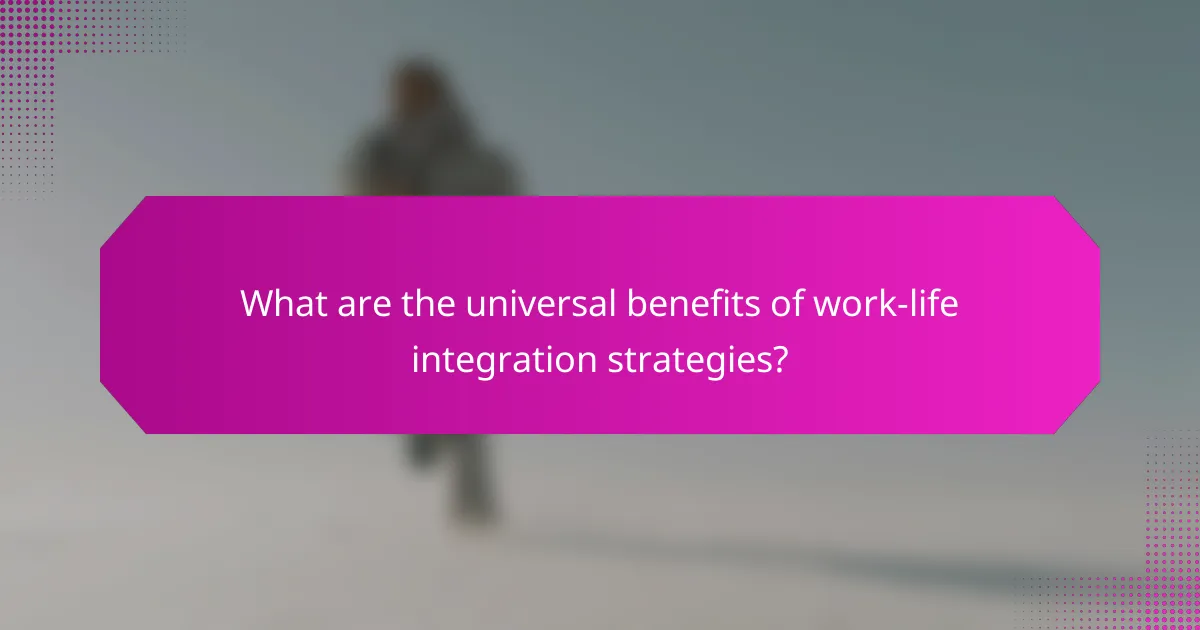
What are the universal benefits of work-life integration strategies?
Work-life integration strategies enhance productivity, reduce stress, and improve overall well-being. These approaches foster flexibility, allowing entrepreneurs to blend personal and professional responsibilities seamlessly. As a result, individuals experience increased job satisfaction and a stronger sense of work-life harmony. Additionally, integrating work and life can lead to better time management and the ability to respond to personal needs without sacrificing professional commitments.
How can work-life integration enhance productivity for entrepreneurs?
Work-life integration enhances productivity for entrepreneurs by allowing flexibility in managing work and personal responsibilities. This approach leads to improved focus, reduced stress, and increased job satisfaction. As a result, entrepreneurs can allocate energy more effectively across tasks, fostering creativity and innovation. Balancing these aspects can also lead to better decision-making and time management. However, challenges include setting boundaries and potential burnout, which require proactive strategies for success.
What role does flexibility play in work-life integration?
Flexibility is crucial in work-life integration as it allows entrepreneurs to balance professional and personal commitments effectively. By adapting schedules and workflows, they can respond to changing demands in both areas. This adaptability promotes well-being, reduces stress, and enhances productivity. Furthermore, flexible arrangements often lead to increased job satisfaction, fostering a positive work environment.
How does work-life integration impact mental health?
Work-life integration positively impacts mental health by promoting balance and reducing stress. Entrepreneurs who implement integration strategies often experience improved well-being and productivity. Research indicates that flexible work arrangements can lead to lower anxiety levels and greater job satisfaction. Additionally, fostering personal connections in the workplace enhances emotional support, further benefiting mental health.
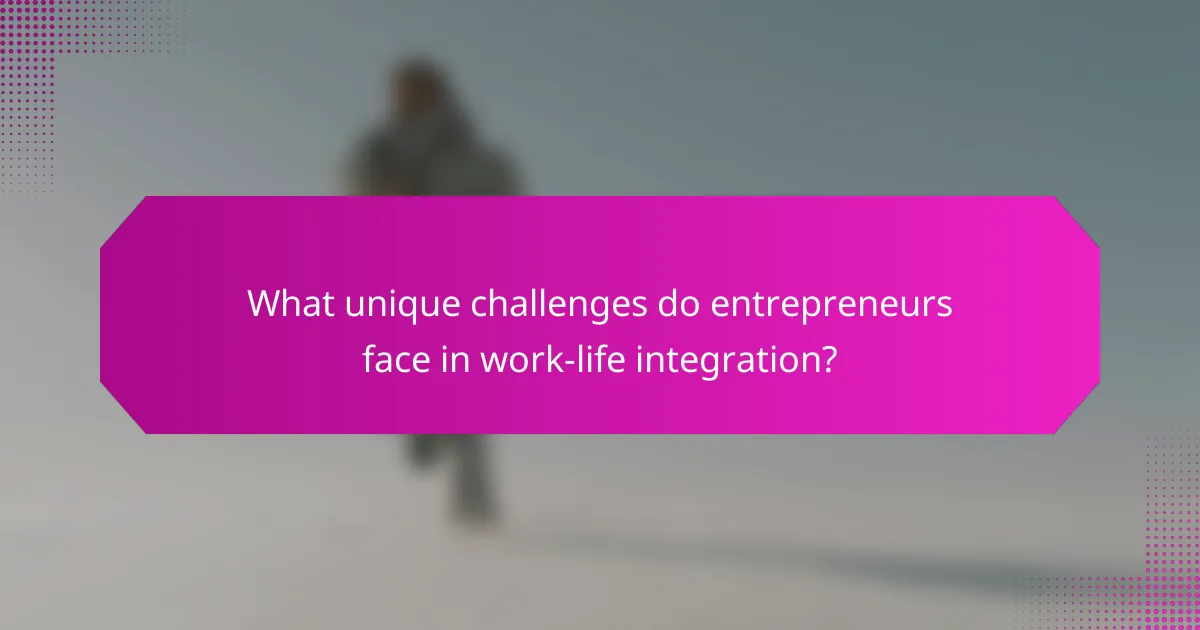
What unique challenges do entrepreneurs face in work-life integration?
Entrepreneurs face unique challenges in work-life integration, including time management, boundary-setting, and emotional strain. Balancing business demands with personal life often leads to burnout. Additionally, entrepreneurs may struggle with the lack of structured support systems, making it difficult to prioritise self-care and family time. As a result, they must develop adaptable strategies to maintain their well-being while pursuing business goals.
How can entrepreneurs manage time effectively between work and personal life?
Entrepreneurs can manage time effectively by prioritising tasks and setting clear boundaries between work and personal life. Implementing structured schedules, utilising productivity tools, and practising mindfulness can enhance focus and reduce stress.
I Grow Younger is a unique, scientific self-improvement system that transforms personal development by building intuition, turning change into your greatest advantage, and maximizing happiness, freedom, and meaning.
Establishing designated work hours helps maintain a work-life balance. For example, adopting techniques like the Pomodoro Technique can improve concentration while allowing for regular breaks.
Communicating boundaries with colleagues and family fosters understanding and support. This approach minimises interruptions and distractions, enabling entrepreneurs to dedicate quality time to both work and personal commitments.
Regularly reviewing and adjusting priorities ensures alignment with personal and professional goals. This adaptability is crucial for navigating challenges and maintaining a fulfilling entrepreneurial journey.
What are common pitfalls in work-life integration for entrepreneurs?
Common pitfalls in work-life integration for entrepreneurs include neglecting personal time, overcommitting to work, and failing to set boundaries. These challenges can lead to burnout and decreased productivity. Entrepreneurs often struggle to prioritise personal well-being alongside business demands. Additionally, the lack of a structured routine may result in poor time management, making it difficult to achieve a balanced lifestyle.
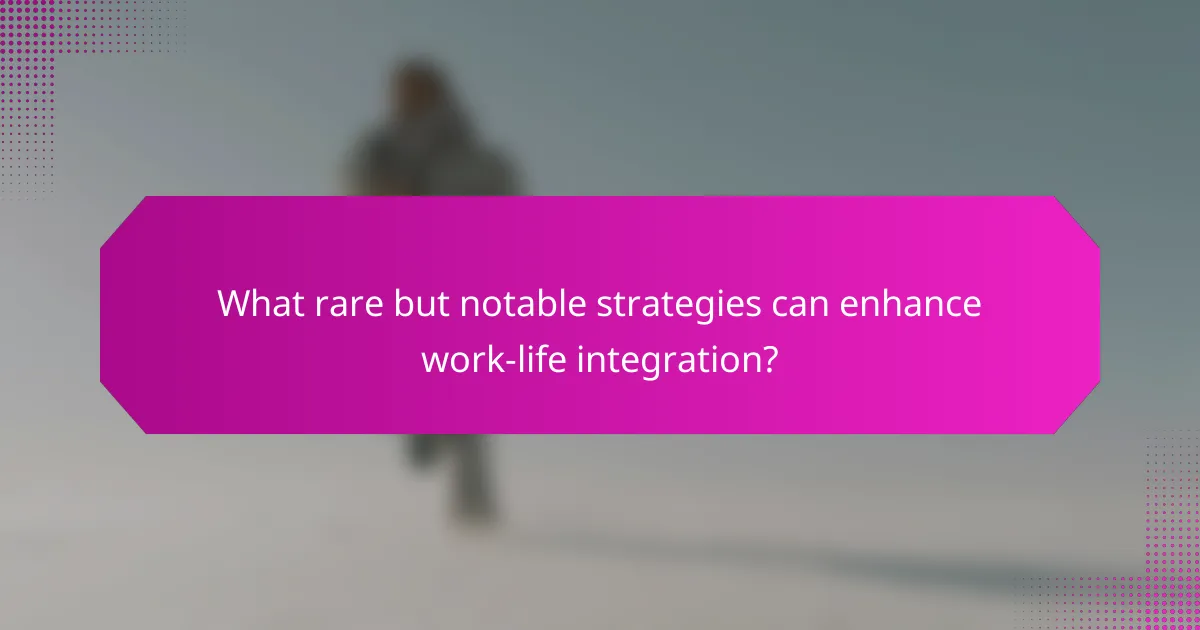
What rare but notable strategies can enhance work-life integration?
Integrating work and life effectively requires unique strategies. One rare but notable approach is the “time-blocking method,” which allocates specific time slots for work and personal activities, enhancing focus and reducing burnout. Another strategy is “micro-breaks,” where short, intentional breaks are taken throughout the day to recharge. Additionally, leveraging technology for task automation can free up time for personal pursuits, fostering better integration. Lastly, establishing a “no-work zone” at home encourages a clear boundary between professional and personal life, promoting mental well-being.
How can technology facilitate better work-life integration?
Technology enhances work-life integration by providing tools that streamline tasks and improve communication. Digital platforms enable entrepreneurs to manage schedules, delegate responsibilities, and maintain flexibility. For instance, project management software allows for real-time collaboration, reducing the need for constant in-person meetings. Additionally, mobile applications facilitate remote work, enabling entrepreneurs to balance personal and professional commitments effectively. As a result, technology not only boosts productivity but also fosters a healthier work-life balance, addressing common challenges faced by entrepreneurs in managing their time and resources.
What innovative approaches have successful entrepreneurs used?
Successful entrepreneurs employ innovative work-life integration strategies that enhance productivity and well-being. These approaches include flexible scheduling, prioritising mental health, and leveraging technology for seamless communication.
Flexible scheduling allows entrepreneurs to align work tasks with personal commitments, fostering a balanced lifestyle. Prioritising mental health through mindfulness practices enhances focus and reduces stress. Leveraging technology, such as project management tools, facilitates efficient collaboration and time management.
These strategies yield benefits like increased job satisfaction and improved work performance. However, challenges include potential burnout and difficulty in setting boundaries. Entrepreneurs must navigate these complexities to achieve sustainable integration of work and life.
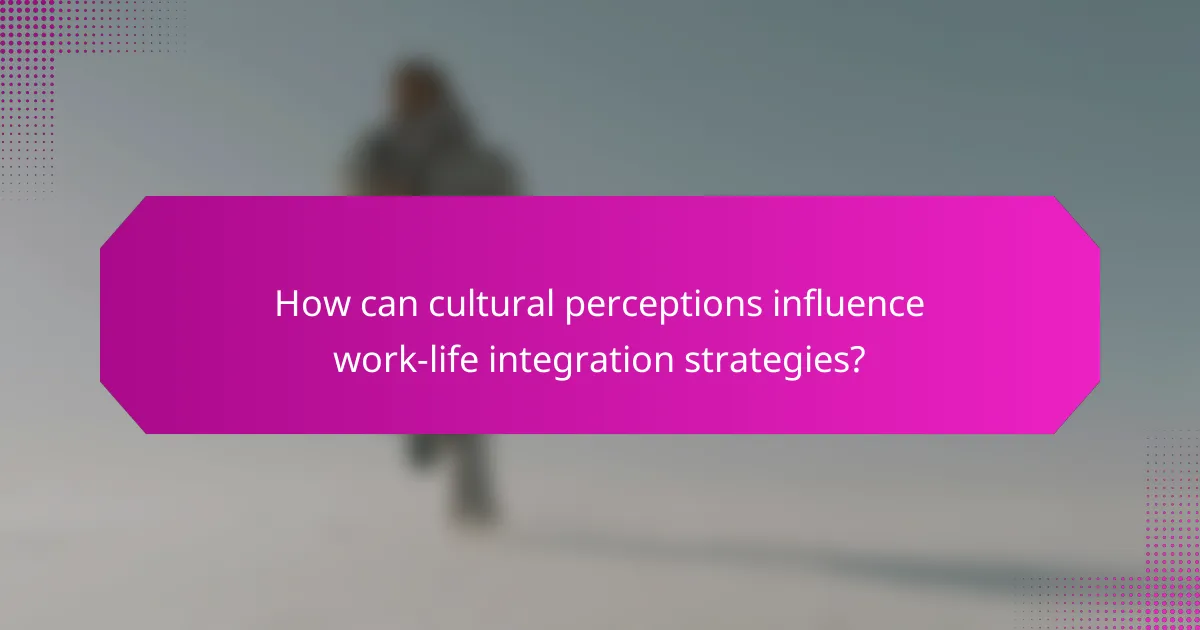
How can cultural perceptions influence work-life integration strategies?
Cultural perceptions significantly shape work-life integration strategies by influencing values and expectations. For instance, cultures that prioritise collectivism may encourage family involvement in business, promoting a balance between professional and personal life. In contrast, individualistic cultures often emphasise personal achievement, leading to strategies focused on personal time management. Additionally, cultural attitudes towards technology impact how entrepreneurs integrate work and life, with some cultures embracing remote work while others prefer traditional office settings. Understanding these cultural nuances helps entrepreneurs tailor their strategies to align with societal norms and enhance overall effectiveness.
What regional differences exist in work-life integration practices?
Regional differences in work-life integration practices reflect cultural, economic, and societal factors. In Northern Europe, flexible work hours and remote work are common, promoting a strong balance between personal and professional life. In contrast, Asian regions often emphasise longer hours and loyalty to the company, leading to challenges in achieving integration. Southern Europe tends to prioritise family time, influencing the adoption of more relaxed work schedules. Understanding these regional nuances helps entrepreneurs tailor their strategies effectively.
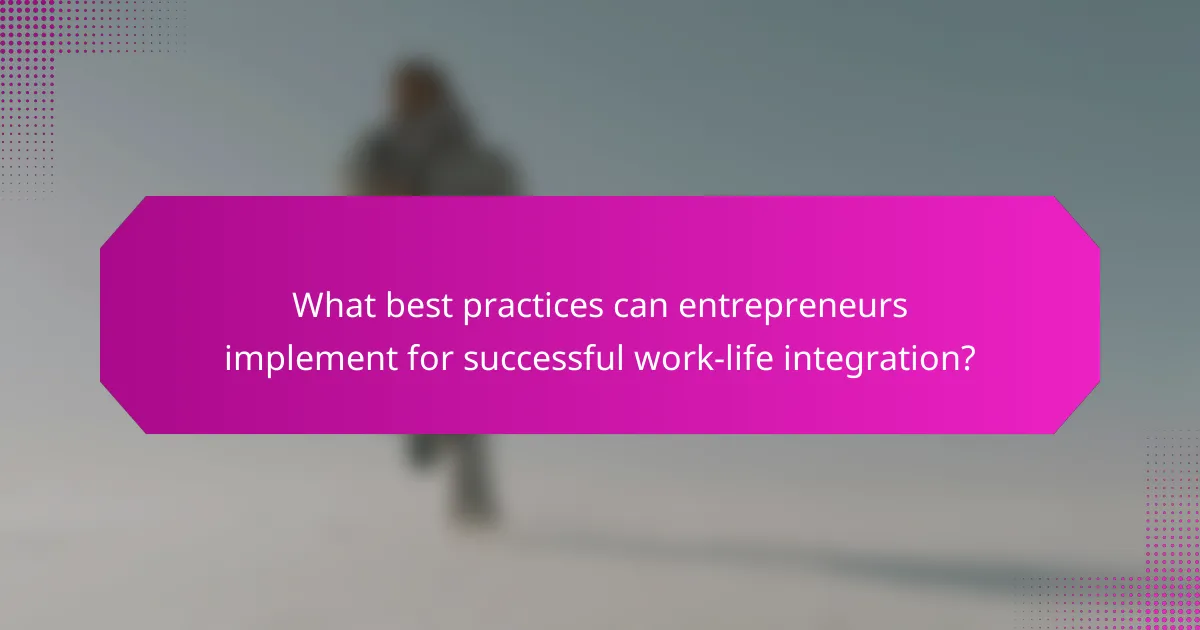
What best practices can entrepreneurs implement for successful work-life integration?
Entrepreneurs can implement strategies like setting boundaries, prioritising tasks, and leveraging technology for successful work-life integration. These practices enhance productivity and well-being.
1. Set clear boundaries: Define work hours and personal time to avoid burnout.
2. Prioritise tasks: Focus on high-impact activities to maximise efficiency.
3. Leverage technology: Use tools for scheduling and communication to streamline processes.
4. Foster flexibility: Embrace adaptable work arrangements to balance commitments.
5. Practice self-care: Incorporate regular breaks and wellness activities to maintain energy.
These strategies address common challenges, leading to sustainable work-life integration.
What tools and resources are available to support work-life integration?
Various tools and resources support work-life integration for entrepreneurs. These include time management apps, productivity software, and wellness platforms.
Time management apps like Trello and Asana help prioritise tasks efficiently. Productivity software such as Slack and Zoom facilitates communication and collaboration, enabling flexible work arrangements. Wellness platforms like Headspace and Calm offer mental health resources to reduce stress.
Entrepreneurs can also benefit from networking groups and mentorship programmes, which provide support and shared experiences. These resources foster a balanced approach to work and personal life, enhancing overall well-being.
What are expert tips for overcoming common challenges in work-life integration?
To overcome common challenges in work-life integration, prioritise clear boundaries, effective time management, and regular self-reflection. Establishing designated work hours helps maintain focus. Utilising productivity tools can enhance efficiency. Lastly, regularly assessing personal and professional goals ensures alignment with values, fostering a sustainable balance.
